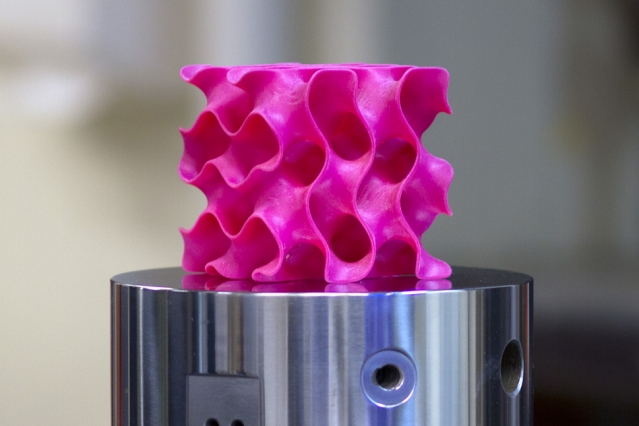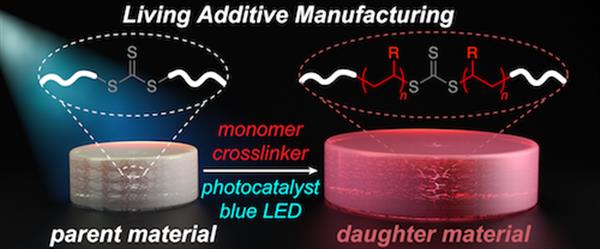Researchers at MIT have developed a method of altering 3D printed objects once printed. The technique involves using light in order to adapt the chemical structure of a 3D printed material. This allows the creation of more complex objects which could be molded together, softened, or even enlarged.
The university is a hub of 3D printing research. Recently announcement include their Computer Science and Artificial Intelligence Lab creating the ‘photoshop for 3D printing’. The ‘Foundry’ software was developed in order to make use of 3D printing’s advanced capabilities over conventional manufacturing techniques. Also addressing 3D printing technology, MIT researchers looked at using 3D printing to investigate how graphene might create the strongest material ever.
The newly published paper is called ‘Living Additive Manufacturing: Transformation of Parent Gels into Diversely Functionalized Daughter Gels Made Possible by Visible Light Photoredox Catalysis’ and available in the ACS Central Science Journal.

The adaptive process of living 3D printing
In the paper, the researchers refer to the process as “living additive manufacturing.” In traditional 3D printing once printed, plastic polymers are set in shape and structure. They are not able to be manipulated having been 3D printed unlike MIT’s living structures.
Senior author Jeremiah Johnson, Associate Professor of Chemistry at MIT describes the research,
The idea is that you could print a material and subsequently take that material and, using light, morph the material into something else, or grow the material further.
Referring to the adapted object as ‘daughter’ and the original as ‘parent’, lead authors Mao Chen and Yuwei Guhey explain the possibilities of creating, “Daughter gels that are softer than their parent, stiffer than their parent, larger but with the same modulus as their parent, thermally responsive, polarity responsive, healable, and weldable are all realized.”

The 3D printing technique involves adding monomers that react to light. However while this research is exciting, the process can currently only occur in the absence of oxygen. Through further research they hope to refine this and create non-sensitive method.
Writing the paper was: Mao Chen, Yuwei Gu, Awaneesh Singh, Mingjiang Zhong, Alex M. Jordan, Santidan Biswas, LaShanda T. J. Korley, Anna C. Balazs, and Jeremiah A. Johnson.
Featured image shows a before-and-after of the adaptable process for 3D printing. Image via Demin Liu and Jeremiah Johnson from MIT.



